The Sony A6400 was introduced in January 2019, succeeding the popular A6300 with a more advanced autofocus (the best I’d ever tested at the time), HDR video, a 180˚ tilting screen and a small improvement to the sensor.
The ZV-E10 arrives more than two years later. Inside, it packs the same technology but with new features and a slightly different design that target a specific type of audience: V-Loggers.
Let’s see how these two cameras compare but first, a quick round up of what the ZV-E10 and A6400 have in common:
- 24.2MP Exmor CMOS sensor
- ISO 100-32,000 (up to 51,200 ISO for the ZV-E10 and 102,400 ISO for the A6400 with the extended range)
- Max. 1/4000s shutter speed
- Hybrid AF with 425 points, real-time tracking
- 11fps of continuous shooting (with C-AF)
- 4K video up to 30p (from 6K oversampling with full-pixel readout and no binning)
- 4:2:0 8-bit internal recording
- Full HD up to 120p
- S-Log2, S-Log3 and HLG profiles
More about the ZV-E10:
Sony ZV-E10 vs ZV-1
More about the A6400:
Sony A6100 vs A6400 vs A6600
Sony A6400 vs Fujifilm X-S10
Sony A6400 vs Nikon Z50
Sony A6400 vs Canon M50
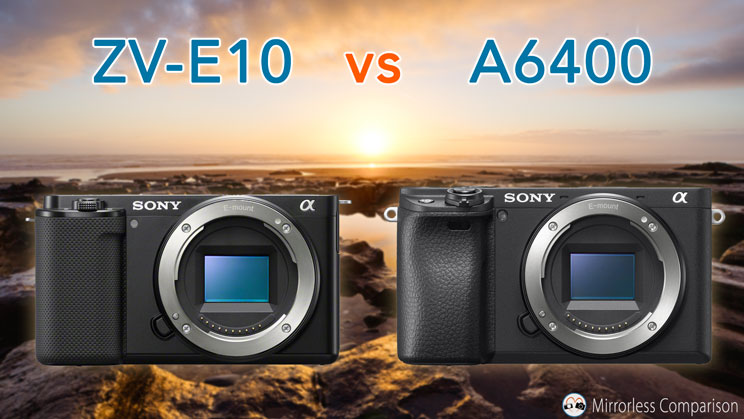
Ethics statement: the following is based on official specifications and our personal experience with the A6400. We were not asked to write anything about these products, nor were we provided with any sort of compensation. Within the article, there are affiliate links. If you buy something after clicking the link, we will receive a small commission. To know more about our ethics, you can visit our full disclosure page. Thank you!
1. Design and controls
Both cameras have a compact design but only the A6400 has a magnesium alloy frame and weather sealing (dust and moisture). The ZV-E10 is smaller and lighter than the A6400.
- ZV-E10: 115.2 x 64.2 x 44.8, 343g
- A6400: 120 x 66.9 x 49.9mm, 403g
The design is very similar and what stands out is the absence of a viewfinder and built-in flash on the ZV model, as well as a larger microphone on top. We will talk about the mic and EVF further down, so the other thing to highlight is the different button layout.
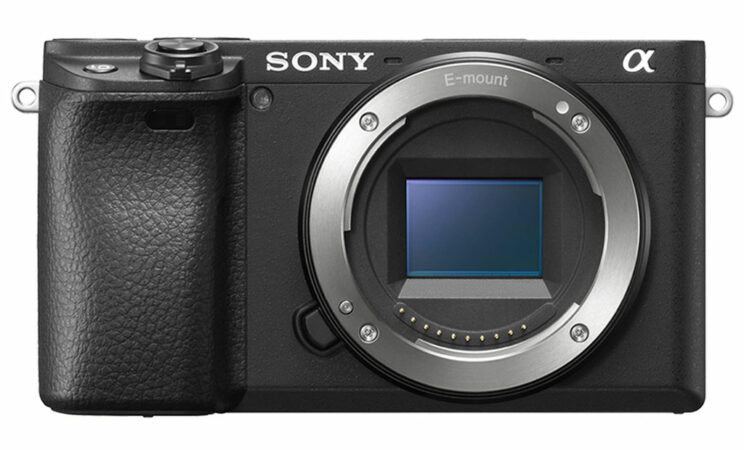
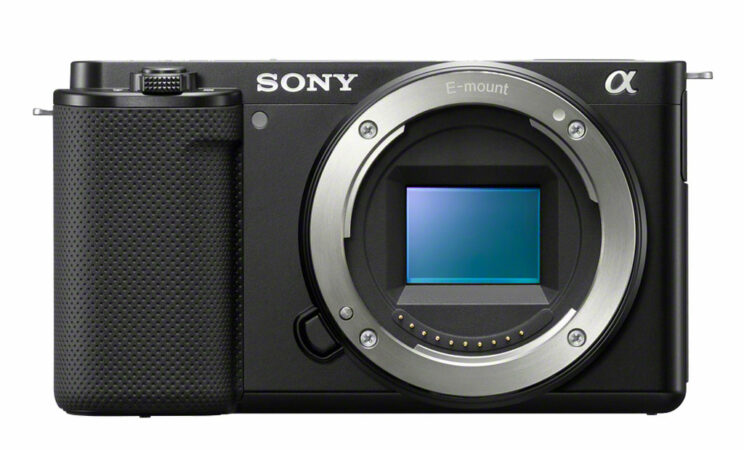
On top, the ZV-E10 has:
- a big video recording button
- a C1 custom button
- a still/movie/slow-motion button to quickly switch between the three modes
- a new On/Off switch
- an exposure dial
The switch around the shutter release button is used to zoom in or out (with power zoom lenses or the Clear Image Zoom function).
On top of the A6400 you find:
- the classic shooting mode dial where you select various modes including video and S&Q
- the C1 button, but located near the shutter release
- the On/Off switch built around the shutter button
- the same exposure dial
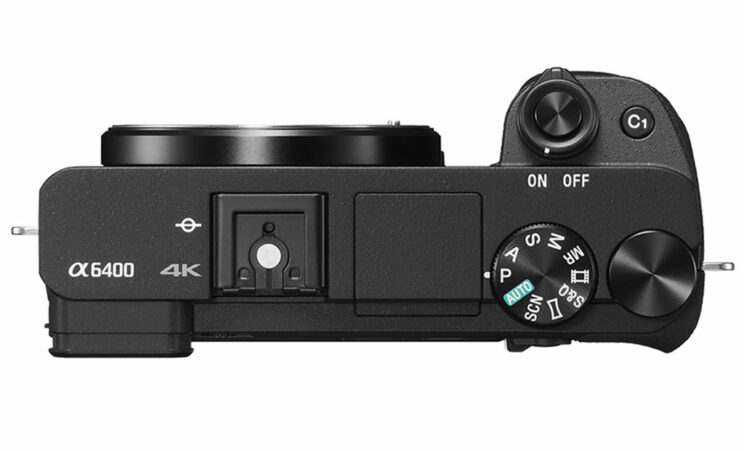
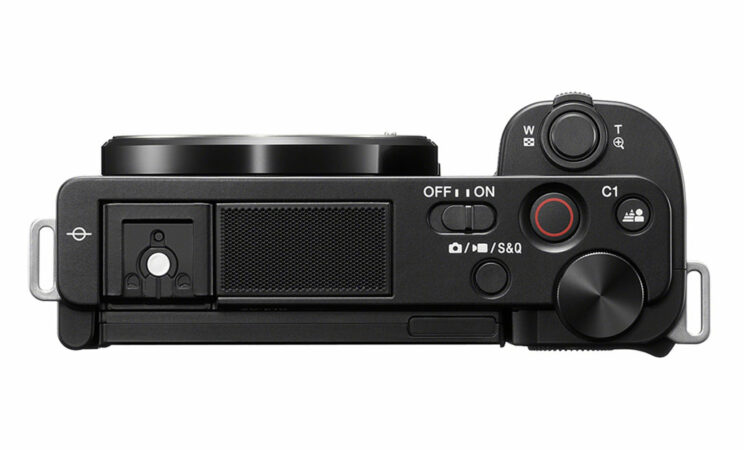
The stereo microphone is smaller and on the front (with very tiny openings), and you’ll see a built-in flash on top instead. The video button is smaller and located on the rear, on the external part of the thumb grip.
On the back, the A6400 has a function lever, which is the only extra button you won’t find on the ZV-E10 (plus the flash button).
On the ZV-E10, the menu button is rounded and larger, and positioned more to the right. As for everything else, the keys are the same including the 4-way control wheel.
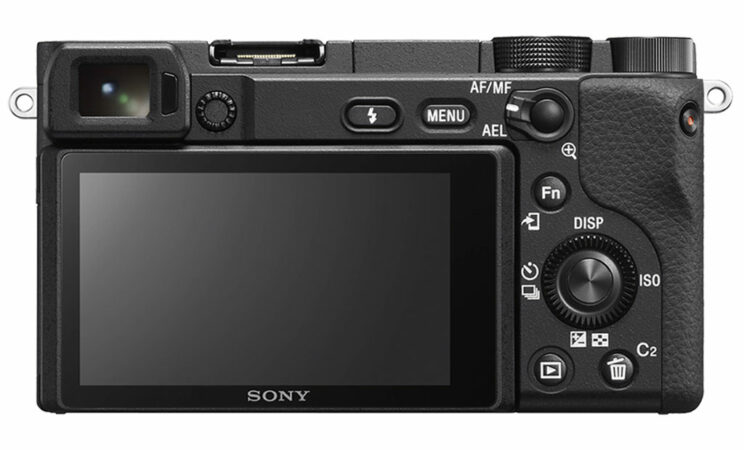
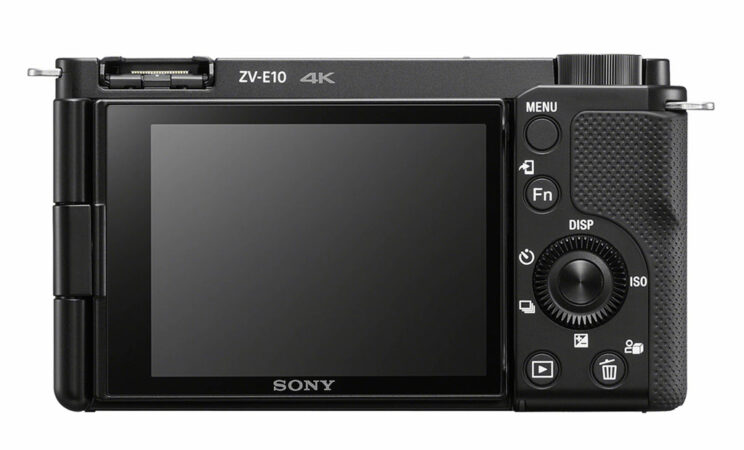
2. Viewfinder and LCD screen
One of the major differences is that the ZV-E10 doesn’t have a built-in viewfinder. I suppose Sony thought there wasn’t the need for it since the camera mainly targets v-loggers (or they wanted to save a few bucks on the construction cost).
The A6400 EVF has a 0.39-in OLED panel with 2.36M dots, 0.7x magnification, 23mm eye-point and a maximum refresh rate of 120fps. It’s a bit small, but I’ve always liked the idea of having a viewfinder. Even if I don’t use it a lot, there are always a few situations where it can be very useful on the go, including for video.
That said, if you are mainly looking for a v-log camera, it’s a shortcoming you can live with.
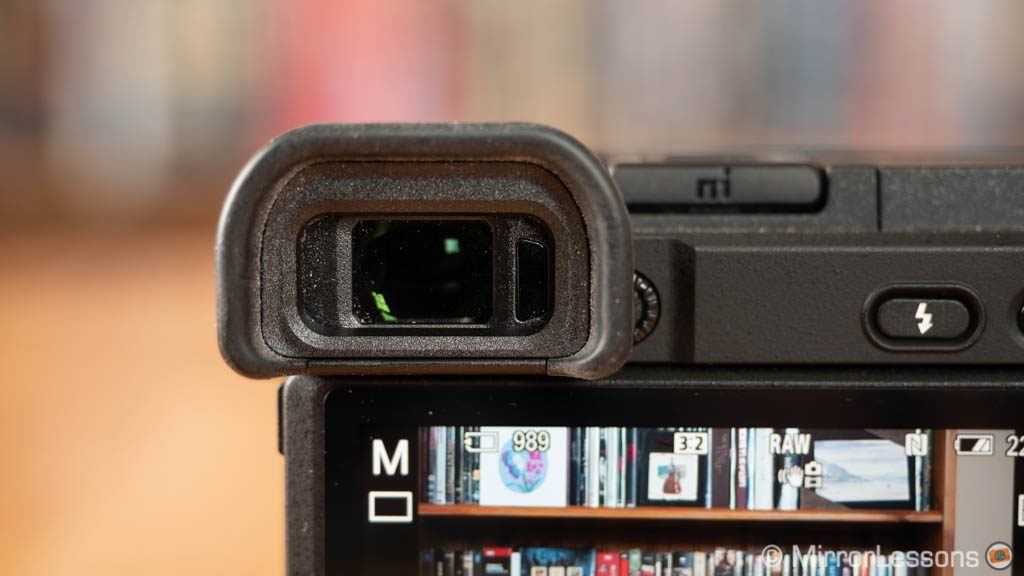
Another difference concerns the rear monitor. The one on the ZV-E10 has a multi-angle mechanism. You can open it to the side and rotate it 180˚. It’s a solution we’ve seen for years on digital cameras and that video-makers tend to prefer.
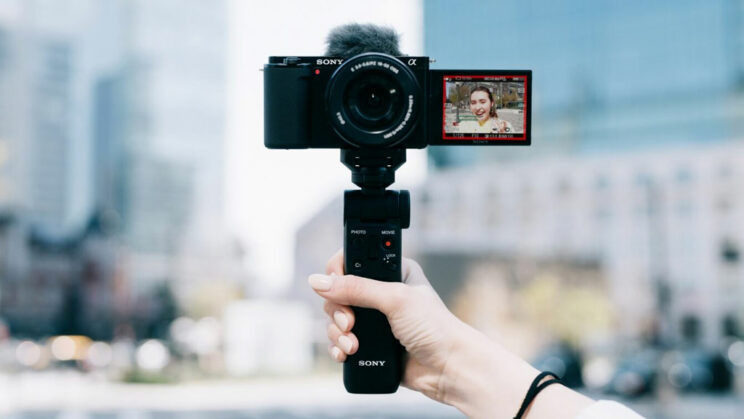
The A6400 has a screen that can tilt down to about 74˚ and up 180˚. This solution aims to accommodate photographers without renouncing the possibility to take selfies or V-log. Plus the screen isn’t hinged to the side, which may be a more robust solution.
The downside is that any accessory on the hot-shoe like a microphone will obstruct the view of the LCD when titled up, so you need to buy an accessory that allows you to attach it to the side.
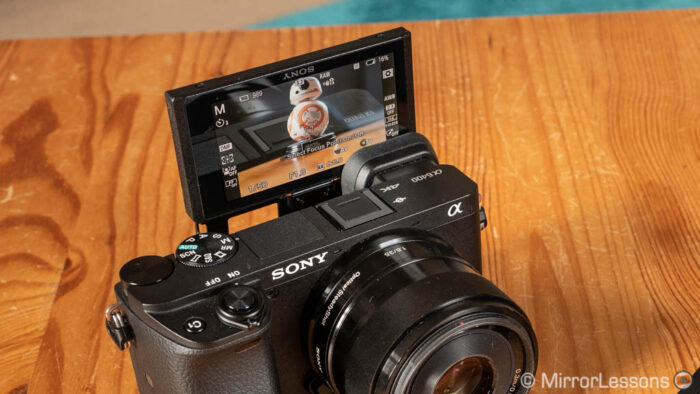
The specifications are the same for both cameras: 3.0-in, 921k dots and touch sensitive.
3. Stabilisation for video
Neither camera features in-body image stabilisation (sensor stabilisation) but the ZV-E10 has an electronic option, called Steadyshot Active mode, that works for video. There is a small crop as a result, which can vary from lens to lens, but it gives you more stabilised footage even if the lens doesn’t have optical stabilisation. Note that the Active mode is not available at 1080p and 100fps or 120fps.
Another option is to use the camera rotation metadata recorded by the built-in gyro of the ZV-E10, and stabilise the footage in post using Sony’s Catalyst Browse or Catalyst Prepare desktop software.
The A6400 doesn’t have digital stabilisation, so you must rely on the OSS of the lens or a third party support.
4. Audio
Both cameras feature a 3.5mm microphone input, but only the ZV-E10 has a headphone output (3.5mm as well).
They also have a built-in microphone, but the one on the ZV-E10 is a directional 3-capsule mic that uses spatial filtering to capture clear audio in front of the camera without distractions from the ambient noise around. A wind screen is included.
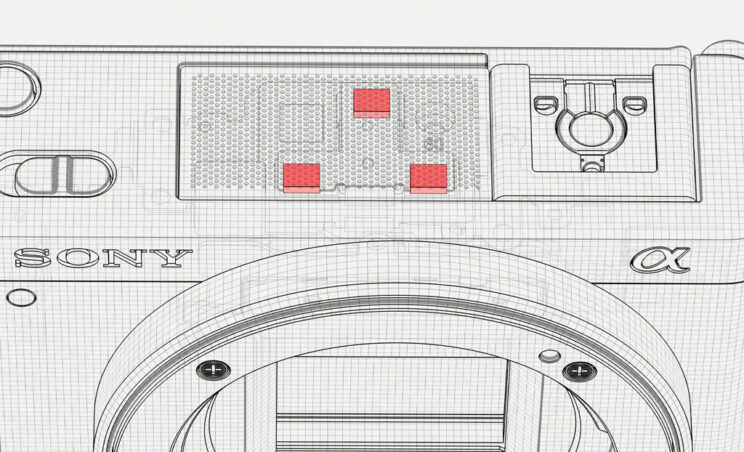
Furthermore, the ZV model is compatible with Sony’s digital audio recording through the Multi Interface shoe. This means you can use the camera with digital microphones such as the ECM-B1M Shotgun or the XLR-K3M XLR Adaptor Kit. The advantage is also not having to worry about batteries or cables.
5. Skin tones
The ZV-E10 includes some of the latest generation colour science by Sony, with specific attention to the natural-looking rendition of skin tones. The camera software is designed to automatically fine-tune the skin’s appearance so that you don’t need to do it in post.
Of course you’ll be the judge of the result, but given the nature of the camera, it makes sense that Sony has concentrated its attention on this specific aspect.
6. V-Log functionalities
Given the target of the ZV-E10, Sony has added additional features that aim to make V-Logging easy to do. The following options are not found on the A6400:
- Background defocus: Allows you to open the aperture of the lens to the fastest value to have more background blur with the simple press of a button (note that audio won’t be recorded with this function).
- Product showcase: The camera will focus automatically on an object when you hold it close to the lens, and then focus back to you when you move the product away. This is helpful if you’re talking about a product in front of the camera, and then move that product close to the camera to show it to your audience. (Note that the Steadyshot setting needs to be on Active.)
- Soft skin effect: Smoothens the skin tones of a person’s face (on the A6400 this option exists for still photos only)
- Tally light: A small red light on the camera that blinks to show that it is recording. Red frames also appear at the edges of the LCD screen.
- Vertical orientation: The camera saves the correct metadata when you record a video in vertical mode, so that you don’t have to rotate it in post.

7. Streaming
A camera built for V-Loggers should also make their lives easier when they want to broadcast live to their audience, and the ZV-E10 has a few features built-in exactly for that purpose.
The camera supports UVC/UAC standards and allow you to stream to a platform such as YouTube or Facebook directly by connecting the USB C 3.2 port of the camera to a computer with the cable. Just enable USB streaming in the menu, select the camera as the source on your live stream platform and you’re good to go. There is no need for a capture card or additional software. Audio is also transferred.
If you own a Sony Xperia phone, the USB streaming function can be used, meaning that you can broadcast live on the go while travelling, as long as there is a good 4G or 5G connection.
There is the possibility to use the A6400 as a webcam, but you need the free Imaging Edge Webcam software. You connect the camera via the micro USB port, but audio is not transmitted so you’ll need a separate audio source.
8. Autofocus tidbits
Both cameras can focus on the eye of a subject, be it human or animal, when working in still mode in single or continuous autofocus. It’s a very good system and Eye AF in particular is one of the best you can find, all brands and systems considered.
In video mode, Eye AF doesn’t work on the A6400, whereas on the ZV-E10 it works for humans only.
The A6400 has two settings to control the AF behaviour in video mode (AF Drive Speed and AF Drive Sensitivity). The ZV-E10 has more advanced controls called AF Transition Speed and AF Subject Shift Sensitivity with seven different levels available.
Additional reading:
9. Battery life
Both products use the old NP-FW50 battery, but the ZV-E10 has a better rating when it comes to battery life (CIPA standard). It can deliver 440 stills or 80 minutes of video recording on one charge.
By comparison, the A6400 does 410 photos or 75 minutes, which is a small difference. As usual, remember that these ratings are often lower than what you can achieve in real life, especially concerning still photos.
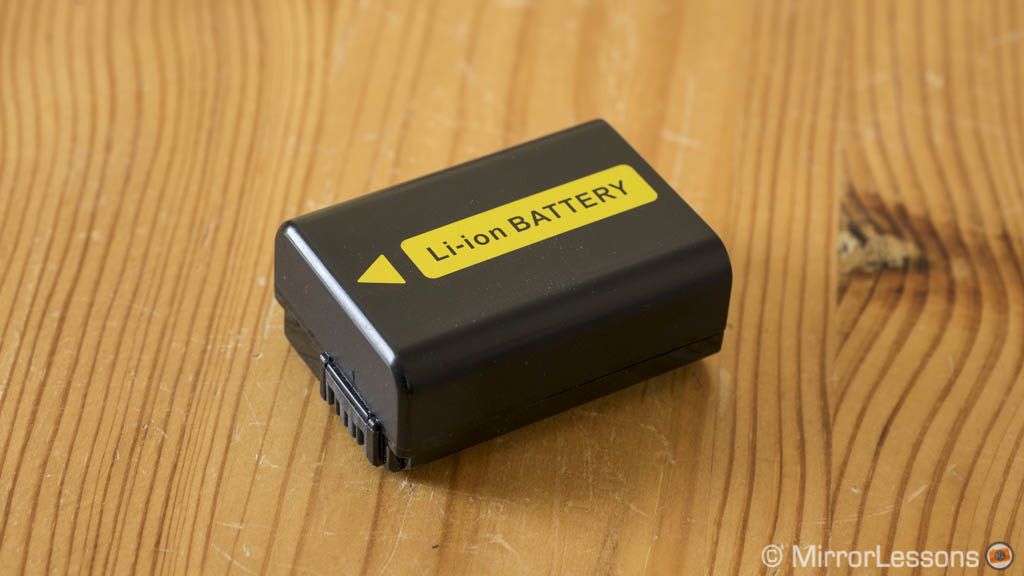
USB charging and power delivery are available on both models.
10. Price
The ZV-E10 can be found for $700 / £680 / €750 body only, or $800 / £770 / €850 with the 16-50mm kit lens.
The A6400 is more expensive, going for $900 (body only), or $1000 with the kit lens. Note that being an older model, you can come across temporary discounts.
Note: prices as of late July 2021.
Conclusion
If you’ve been following the evolution of Sony’s APS-C mirrorless cameras, you may think that the ZV-E10 is just an old model rebadged with a new name and a few ergonomic changes to justify its place in the world. I won’t deny that this was my first impression when the first rumours and images surfaced on the web.
After closer examination, I can understand why this camera exists. Sony has basically re-shaped its entry level segment and added features that are linked to a fast growing trend (V-logging and streaming). It’s not a camera made for those waiting on a new sensor, or a high-end APS-C product for still photographers, perhaps not even for those interested in video-making in the traditional sense.
Choosing between these two models should be pretty straightforward: if video, with a strong interest in v-logging, is your priority, then the ZV-E10 looks like the best choice. Plus, it looks a bit easier to use for a beginner, or someone coming from a smartphone.
If photography is also important to you, you may want to consider the A6400 mainly because it has a viewfinder and a more robust construction, including weather sealing.
Reminder: the links below are affiliate links. If you decided to buy something after clicking the link, we will receive a small commission.
Check price of the Sony ZV-E10 on
Amazon UK | B&H Photo | eBay
Check price of the Sony A6400 on
Amazon | Amazon UK | eBay | B&H Photo
More about the ZV-E10:
Sony ZV-E10 vs ZV-1
More about the A6400:
Sony A6100 vs A6400 vs A6600
Sony A6400 vs Fujifilm X-S10
Sony A6400 vs Nikon Z50
Sony A6400 vs Canon M50


